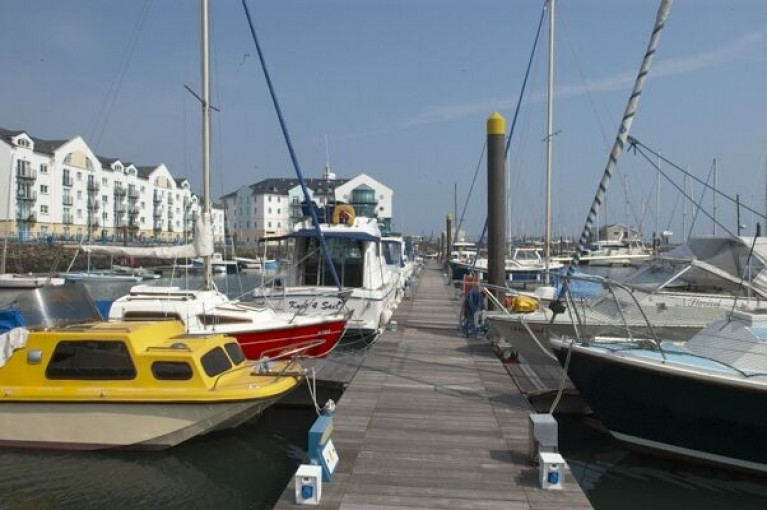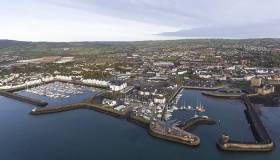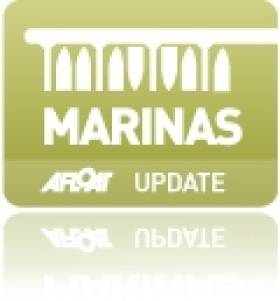Displaying items by tag: carrickfergus marina
Council Delays Dredging of Carrickfergus Marina and Harbour
The programme of dredging Carrickfergus Marina on the north shore of Belfast Lough has suffered delays, apparently due to operational reasons.
The original date for completion was this past Thursday 24 March.
Meanwhile, the status of dredging operations in the nearby harbour — which had been due to finish on 17 May — is also unclear.
Dredging was planned for these areas as they had been deemed to be below the minimum depths as per hydrographic surveys.
Mid and East Antrim Council had previously warned that the above dates were subject to movement based on contractual changes and effects of weather.
The largest number of boats affected are those berthed in Carrickfergus, which has a capacity of 300, and berth holders were given various options for the period of dredging.
From a recent communication from Carrickfergus Marina, it’s understood that the updated programme has now an estimated completion date of mid-May.
It also appears that Carrickfergus Marina has told berth-holders that the local authority will continue to pay the extra cost of relocation to Bangor.
In addition, a select number of berth-holders currently in Bangor Marina will be offered the opportunity to return to Carrickfergus Marina before the end of the dredge.
Any berth-holder who returns will avail of a 30% discount on their monthly payments to Carrickfergus Marina but will have restricted access to their vessel. Interested berth-holders are advised to contact [email protected] or ring the Marina Reception as soon as possible.
The 320 berth Carrickfergus Marina on Belfast Lough and smaller harbours and launching facilities on the Antrim Coast and on the River Bann owned by Mid and East Antrim Council are the latest to hit the buffers due to Covid-19 writes Betty Armstrong.
The others are Carnlough and Glenarm farther north, as well as Portglenone on the Bann. The closure applies also to a range of smaller facilities and launching slipways.
Glenarm is a 40-berth facility and an ideal stopping off point for passage north or south in the North Channel. Carnlough’s harbour has been renovated and is used by pleasure boats and small fishing boats. The 30 berth Portglenone Marina lies on the River Bann about 9 miles west of Ballymena.
The closure exceptions are emergencies and essential maintenance (including electricity top-ups). The five liveaboards in Carrickfergus will still be allowed to stay and use the toilet and washing facilities.
The five liveaboards in Carrickfergus will still be allowed to stay and use the toilet and washing facilities
But all the Marina buildings will remain closed until further notice although security at Carrickfergus will continue 24/7. The office is closed to the public and to berth holders and others need to contact the council to arrange essential access to the area. (+ 44 0 300 124 5000)
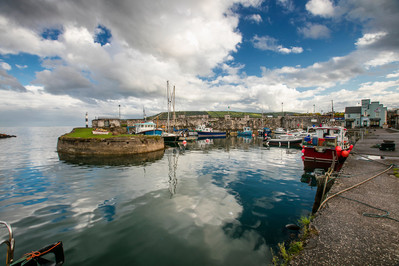 Carnlough Harbour Photo: courtesy Tourism NI
Carnlough Harbour Photo: courtesy Tourism NI
A Notice to Mariners has been issued to discourage visiting boats, advising of the closure. Routine inspections on the sites for essential Health and Safety issues will continue with maintenance restricted to essential H & S issues.
One welcome concession is that the Council is willing to defer the payment of the fees until 30th June 2020.
The Council says that it is impossible to gauge the length of any restrictions that are in place at present or may in the future be imposed but the situation is being kept under review.
Carrickfergus Marina Makes the Perfect Base to Explore
Sponsored content: Carrickfergus Marina situated on the northern shore of Belfast Lough is making the most of the current Euro-Sterling exchange rates to highlight its Five Gold Anchor facility, with 300 fully serviced berths, to sailors and boat owners considering a change of berth on the East Coast.
The County Antrim marina has a choice of flexible contracts, and new customers taking out their first contract will get their first month free on a complimentary basis. In particular, its Winter Berthing Contract is £112.20 per metre for the six month period from 1 October 2016 till 31 March 2017.
Those coming in from 1 November onwards will be given pro-rata of this price, and again each new customer will receive the same discount.
Facilities at Carrickfergus
Customers at Carrickfergus Marina can avail of a boat yard on site, with a 40-ton travel hoist, chandlery and guardianage services are also provided. There is also an onsite brokerage service, and the long-established sailing club, with an active racing and cruising section. Club racing at Carrickfergus runs from Easter through to mid-December.
Twenty-four-hour security should give you peace of mind, while the marina also provides a dedicated berth for contract holders, a post-holding service for those on the go, and free Wi-Fi to stay connected. An extensive site refurbishment is currently underway to revamp the marina’s electrics and access systems, and a new family bathroom with separate shower is due to open in late winter.

Travelling to Carrickfergus
By car: Carrickfergus Marina is just over two hours from Dublin via the M1 and A1 to Belfast, then the M5 and A2 north along Belfast Lough. Car parking is available adjacent to the east and west gates into the marina basin.
By bus/train: The marina can be reached from Dublin in around three hours, by coach from Dublin to Belfast city centre and then local services to the main road outside the marina office, or by rail from Dublin Connolly to Belfast Central and local train (approx 25 minutes) to Carrickfergus station, a three-minute walk from the marina.
Carrickfergus as a destination
Spend a weekend, or a week, in Carrickfergus exploring the town’s unique local heritage, including its Norman castle and renowned St Nicholas’ Church, both dating from the 12th century, as well as the local heritage museum and Flame Gasworks Museum – Ireland’s sole surviving coal gasworks, one of only three left in the British Isles.
Go for a swim or a workout in the state-of-the-art gym at the Amphitheatre Leisure Centre; browse the selection of boutique shops in the town centre; and enjoy a meal in one of the many fine local restaurants — all located within a five-minute walk of the marina.
To keep the family entertained, the Omniplex multiscreen cinema across the road which also offers reduced-price child-friendly and ASD-friendly showings during holidays and weekends, and there is a brand new soft-play centre two minutes’ drive away.
No spare cabin for friends or family? They can stay at one of the town’s comfortable local hotels. Premier Inn is right across the road, while Dobbins Inn is a five-minute walk on the town’s main street, and the four-star Loughshore Hotel is a two-minute drive from the marina.
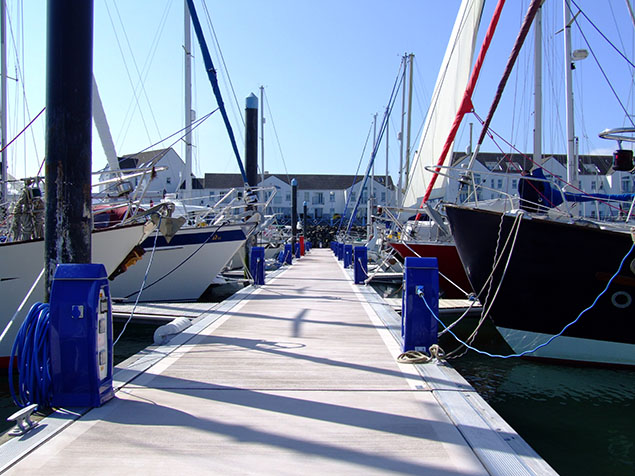
Contact details are as follows:
Carrickfergus Marina, Mid & East Antrim Borough Council, 3 Quayside, Carrickfergus, BT38 8BJ Telephone: 028 9336 6666
Website: www.midandeastantrim.gov.uk
Carrickfergus Marina. Yacht & Boat Berths & Storage in Northern Ireland
Located on the north shore of Belfast Lough, Carrickfergus Marina and harbour incorporates two sheltered area suitable for leisure craft. The harbour is dominated by a magnificent 12th Century Norman Castle which, recently renovated includes a film theatre, banqueting room and outdoor models depicting the castle's chequered history. The marina is located 250 metres west of the harbour and has become increasingly popular since opeing in 1985. A range of shops and restaurants along the waterfront caters for most yachtsmen's needs.


























